On December 5, 1883, Vincent van Gogh, aged 30, arrived by train from Nieuw-Amsterdam in Drenthe at the then station in Nuenen. He moves in with his parents in the parsonage. Vincent feels, however, that he is not really welcome.
In letter 413 of Dec. 15, 1883, he wrote: "There is a similar objection to taking me in as there would be to having a large shaggy dog in the house. He will come into the room with wet paws - and then, he is so rough. He'll get in everyone's way - and he barks so loud - he's a dirty animal - in short.
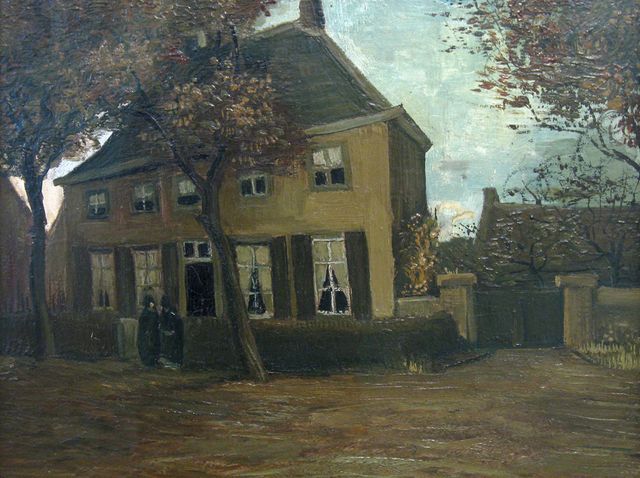
At the back of the rectory, his father Theodorus van Gogh set up a small studio for Vincent in the laundry room. Vincent did not work here for long because already in May 1884, due to his many arguments with his father, he sought another workshop.
He found his new studio with Johannes Schafrat, the sexton of the Catholic Clemens Church in Nuenen. The sexton's house stood to the left of the church, but was demolished in 1936. After his father's death, Vincent also moved into the studio. Here he paints the Potato Eaters.
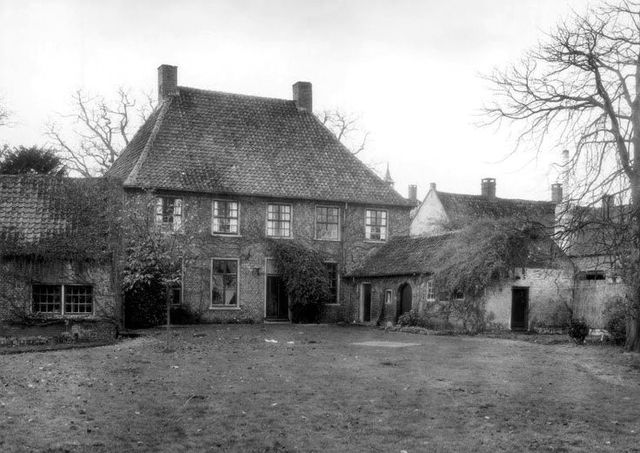
Vincent's father was pastor in Nuenen from August 1882 until his death on March 26, 1885. Vincent makes a painting of the small church where his father preaches with special autobiographical value. He makes it as a gift for his mother who, due to an accident, has to keep the bed and cannot go to church. Later, after his father's death, Vincent modified this painting with peasant people in mourning clothes.
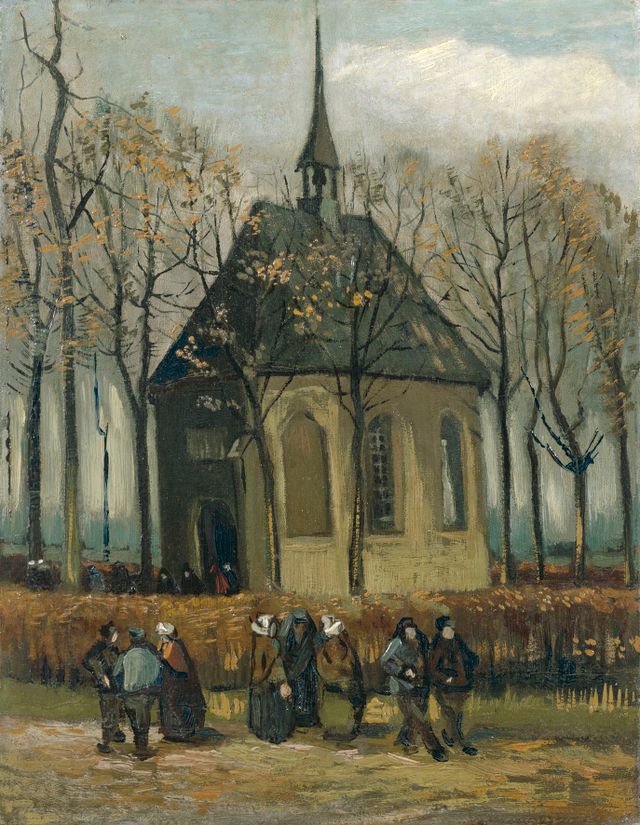
Vincent makes the choice in Nuenen to use the daily, hard life of peasants and weavers as a starting point for his painting.
His stay in Nuenen is one of the most important and productive periods of his life. From December 1883 to November 1885, he produced a quarter of his total oeuvre.
No fewer than 24 buildings and landscapes recall his stay in Nuenen; 14 of them were painted or drawn by him. Some landscapes in the immediate vicinity still exude the atmosphere of his time.
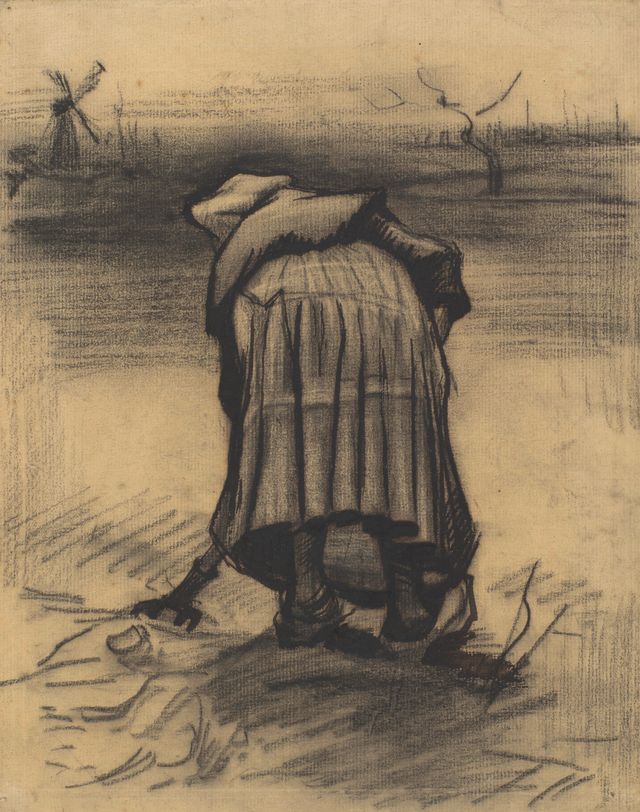
In the spring of 1884, Vincent falls in love with his 12-year-old neighbor Margot Begemann. She is the second youngest daughter of Reverend Begemann, a pastor of Reverend Van Gogh.
Together with Vincent, she cares for his mother, who has to keep the bed because of a broken leg. They fall in love with each other. Father and mother Van Gogh but also the older, unmarried, Begemann sisters oppose the relationship.
The relationship came to a dramatic end in the summer of 1884 with Margot's attempted suicide.
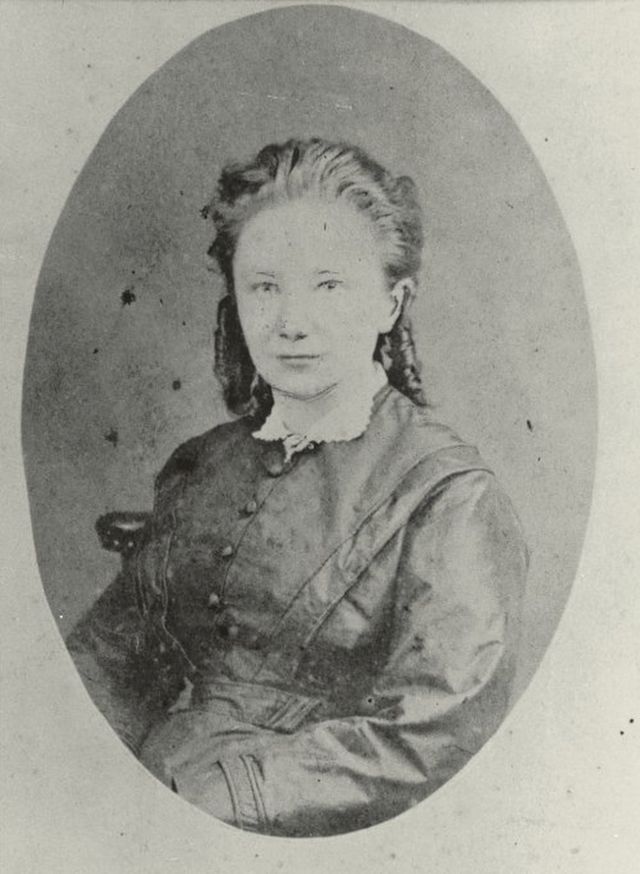
With a large piece of several figures, Van Gogh hopes to prove himself to the outside world. Painting a daily meal of farm workers is popular at the time.
For months he practices painting heads. Dozens of studies precede The Potato Eaters. He himself is satisfied with the result, but his brother Theo and artist friend Anthon van Rappard strongly criticize the work.

Vincent made frequent trips to Eindhoven, mainly to buy painting supplies and to visit his painter friends Willem van de Wakker, Anton Kerssemakers, Dimmen Gestel and Antoon Hermans. Along the way, he often found motifs for his drawings and paintings: the Opwetten watermill, the Martinus Church of Tongelre, the sheds of the old railway station in Eindhoven, the Catharinakerk and the telegraph office there.
Who are these painting friends?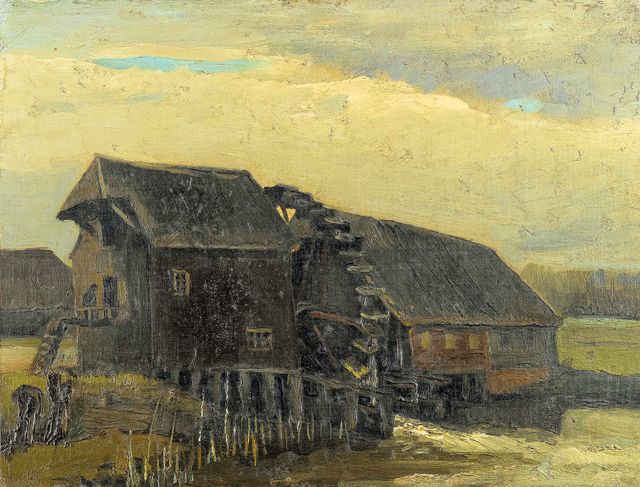
On November 24 of 1885, Vincent left for Antwerp.
Several drawings and paintings left with his family were lost when his mother and sister Willemien moved to Breda in early 1886.
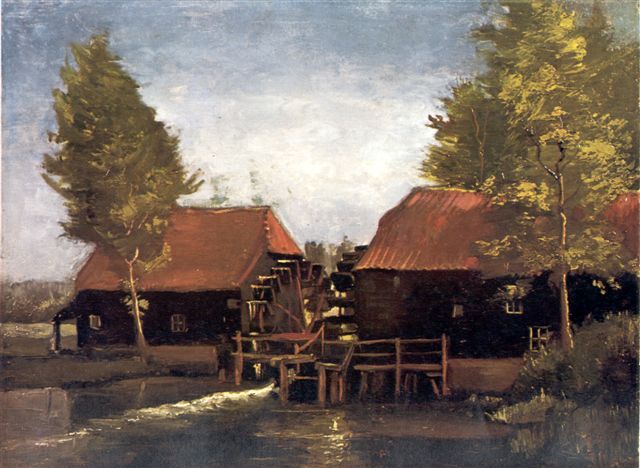
"I mean the refraction of colors, red with green, blue with orange, yellow with violet.- The ever merging of complementary colors, their influence on each other.- Of which nature is as full as of light & brown. "
Letter 528, Vincent Van Gogh to Anthon van Rappard